Arab delicacies is a vibrant fusion of daring flavours and time-honoured traditions. From hearty meat dishes and contemporary salads to spicy avenue meals and indulgent desserts, Arabic meals gives one thing for everybody. Whether or not you favor daring spices or mild, wholesome meals, Arab delicacies has all of it. Let’s take a journey by the various dishes of the Arab world and uncover its many culinary treasures.
The Historical past of Arab Delicacies
Arab delicacies has developed over centuries, influenced by travellers, merchants, and explorers from varied components of the world. In the course of the Golden Age of Islamic civilisation (seventh to thirteenth centuries), cultural alternate flourished, bringing new components and cooking strategies. Well-liked Arabic dishes comparable to hummus, falafel, and kebabs unfold past the area, gaining worldwide fame for his or her easy but wealthy flavours. From the bustling streets of Saudi Arabia to the center of the Maghreb area, Arabic meals has influenced many cuisines throughout the globe, leaving an indelible mark.
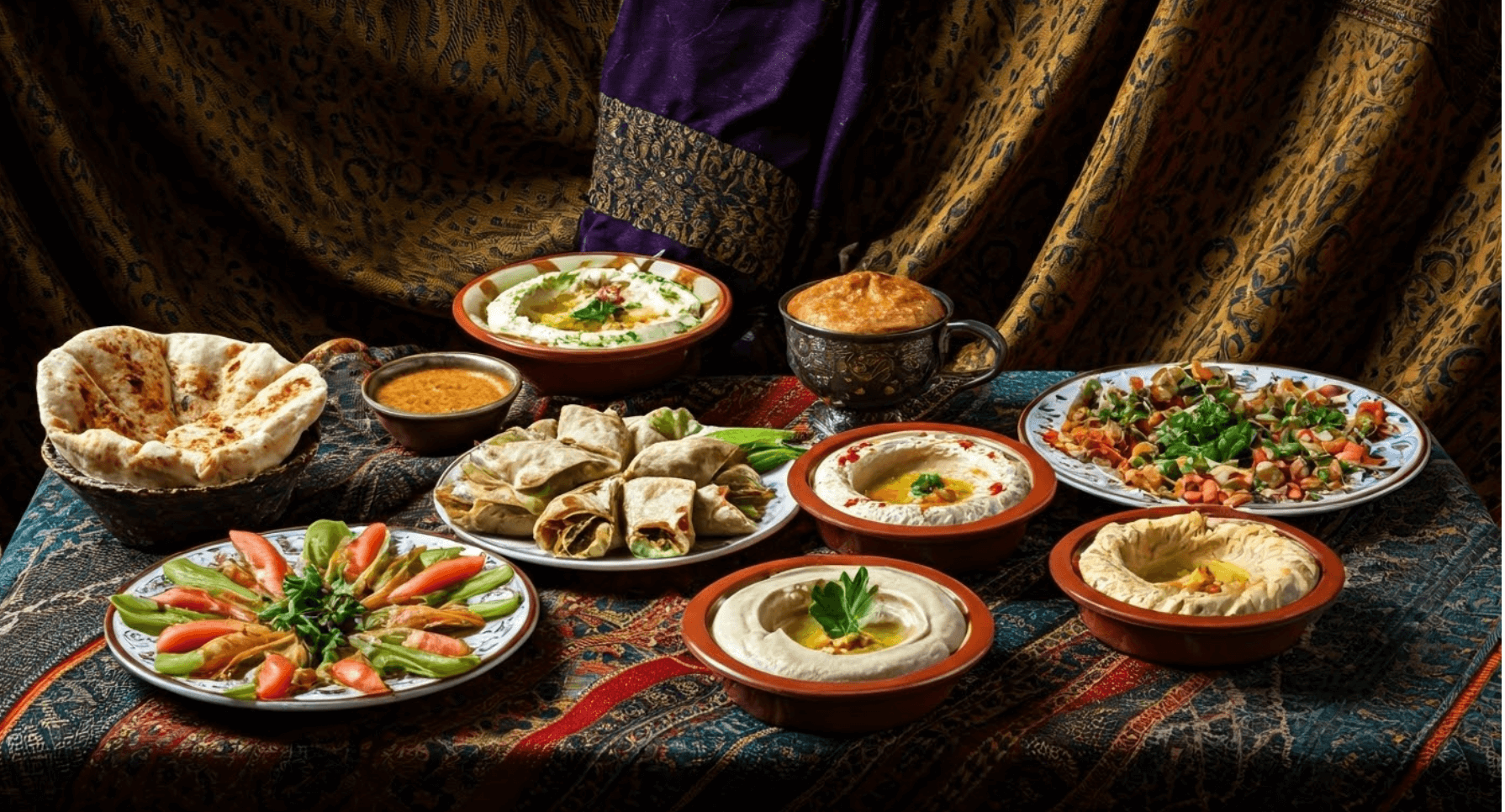

Quite a lot of Arab dishes on a desk
What Are the Numerous Flavours of Arab Delicacies?
Arab delicacies is a wealthy mixture of flavours influenced by many cultures. As a result of the Arab world lies between Africa, Asia, and Europe, its meals has been formed by Persian, African, and Mediterranean traditions throughout the Arab area. Every Arab nation has its distinctive dishes, providing all kinds of tastes. Whether or not you’re within the deserts of Saudi Arabia or alongside the coast of Qatar, the meals is bound to impress and offer you a style of the area’s wealthy culinary heritage. Let’s try the favored Arab delicacies beneath.
Levantine Delicacies
Levantine delicacies comes from the Levant area, which incorporates international locations like Lebanon, Syria, Jordan, and Palestine. Recognized for its contemporary and vibrant flavours, Levantine meals makes intensive use of olive oil, contemporary herbs, and spices like black pepper and purple pepper, showcasing a variety of culinary strategies and components.
Some standard dishes embody baba ghanoush (a smoky eggplant dip), falafel (crispy fried chickpea balls), and french fries with fattoush (a tangy salad made with contemporary greens and crispy pita bread). The meals is usually served with pita bread and is loved with quite a lot of dips, salads, and major dishes. Floor meat like floor beef or lamb can be utilized in many Levantine dishes, including richness and flavour. This model of cooking celebrates contemporary components and daring flavours.
Emirati Delicacies
Emirati delicacies comes from the United Arab Emirates, with Dubai and Abu Dhabi being probably the most well-known cities. The delicacies right here blends flavours from Persian delicacies, Indian delicacies, and African delicacies, reflecting the nation’s place as a buying and selling hub.
Because of the nation’s coastal location, contemporary seafood performs an vital position in lots of Emirati dishes. Fish is usually cooked with turmeric and saffron, which infuse the dish with a aromatic, fragrant style. One well-known dish is madrooba, a thick fish stew cooked with spices. Camel meat can be a key ingredient in Emirati delicacies, often reserved for particular events. For dessert, strive luqaimat, deep-fried dumplings drizzled with date syrup, a candy deal with you don’t need to miss.
Qatari Delicacies
Qatari delicacies blends conventional Arab meals with influences from Indian, Persian, and Mediterranean cultures. Meat dishes, particularly lamb and hen, are standard, and spices like saffron, cardamom, and turmeric are generally used to flavour dishes.
One of the crucial well-known dishes is Machbous, a rice dish cooked with tender meat and garnished with pine nuts and raisins. Seafood additionally performs a giant position in Qatari delicacies as a result of nation’s coastal location. One other standard dish is Madrouba, a fish stew cooked with yoghurt and spices. Qatari meals is wealthy in flavour, with distinctive spices and cooking strategies that make each chew an thrilling expertise.
Omani Delicacies
Omani delicacies is a fusion of flavours influenced by Arabian, Persian, and African culinary traditions. Seafood is a serious a part of Omani meals, because of the nation’s lengthy shoreline.
Omani dishes are sometimes flavoured with spices like cardamom, cloves, and cinnamon, giving them a deep, fragrant style. One in all Oman’s most well-known dishes is Shuwa, a slow-cooked marinated meat served on particular events. Dates, honey, and nuts are generally utilized in Omani desserts, providing a candy distinction to the savoury dishes. Using spices and the steadiness of flavours make Omani delicacies a very particular expertise.
8 Well-liked Dishes: A Glimpse into Arab Delicacies
From the sleek, creamy hummus to the crispy falafel, these dishes symbolize the true style of Center Japanese meals, together with specialities from the international locations of the Arabian Peninsula. Whether or not you’re within the temper for a tasty snack or a candy dessert, these Arabic delicacies dishes gives you an ideal introduction to the various flavours of the area. Let’s discover these scrumptious dishes!
Baba Ghanoush
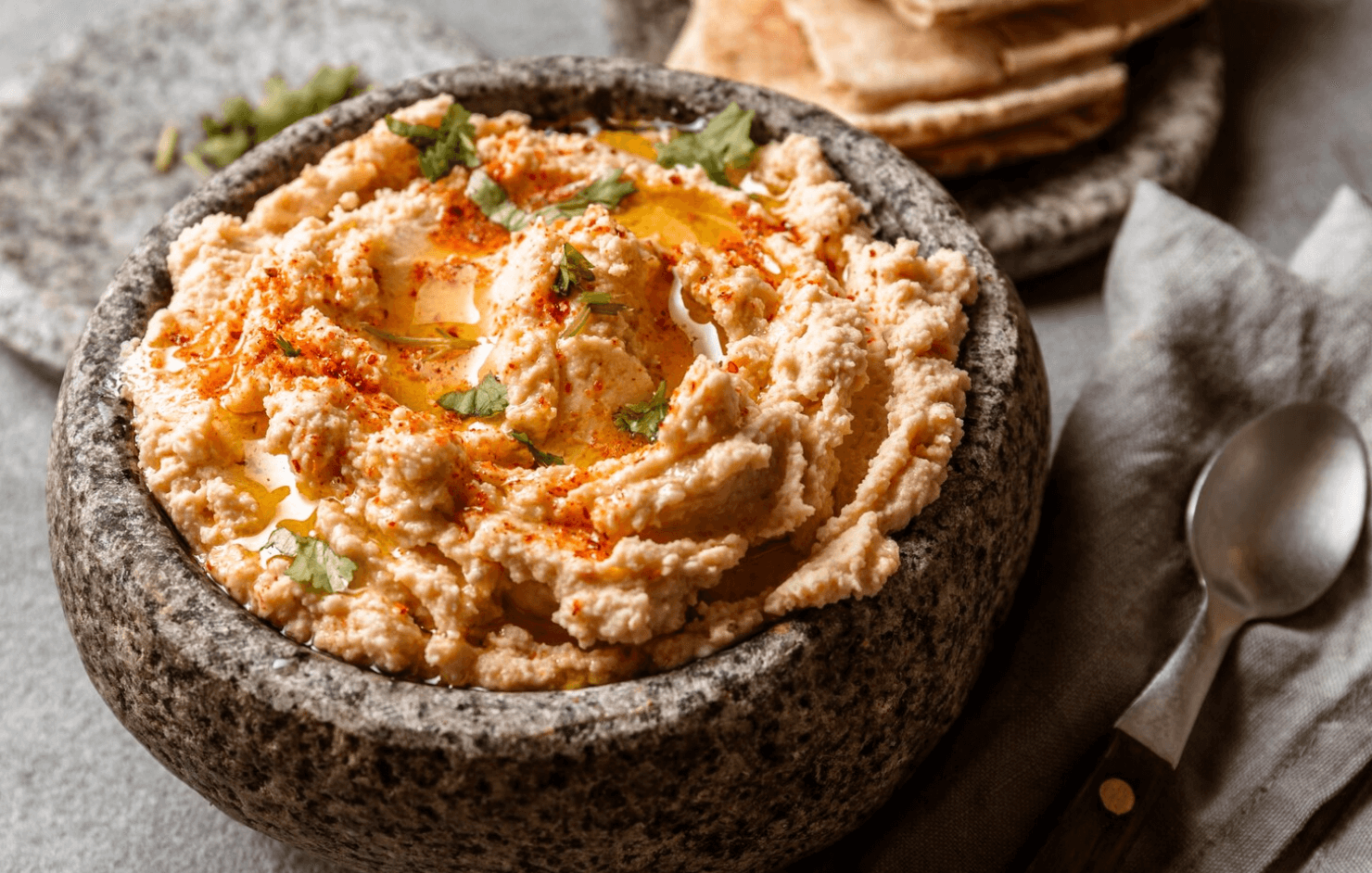

Baba Ghanoush
Baba Ghanoush is a well-liked dip constructed from roasted eggplant, tahini, garlic, lemon juice, and olive oil. It’s creamy and smoky, making it a favorite appetiser throughout the Arab world. This dip is usually served with pita bread or uncooked greens and is a traditional instance of Arabic delicacies dishes. Baba Ghanoush is simple to get pleasure from and offers a style of Center Japanese delicacies at its greatest.
Falafel
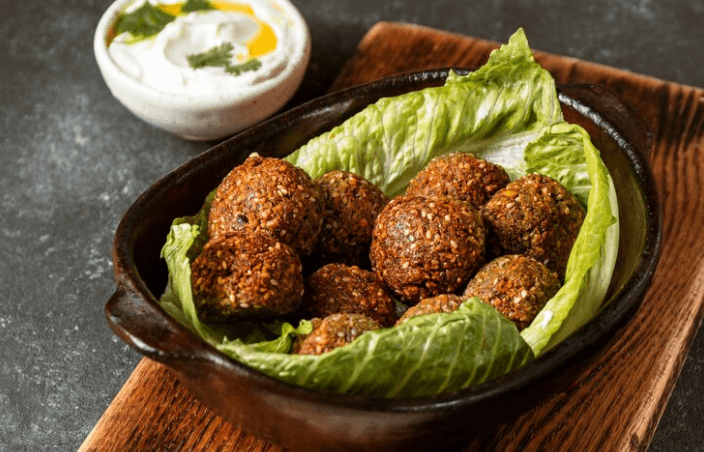

Falafel
Falafel are deep-fried balls constructed from floor chickpeas or fava beans. These crispy, golden balls are sometimes served on pita bread with hummus, tahini, or greens. Falafel is a well-liked avenue meals in Arab international locations, and it’s liked for its crunchy exterior and comfortable, flavourful inside. An ideal vegetarian snack, falafel is a star in Arabic delicacies and a favorite worldwide.
Hummus
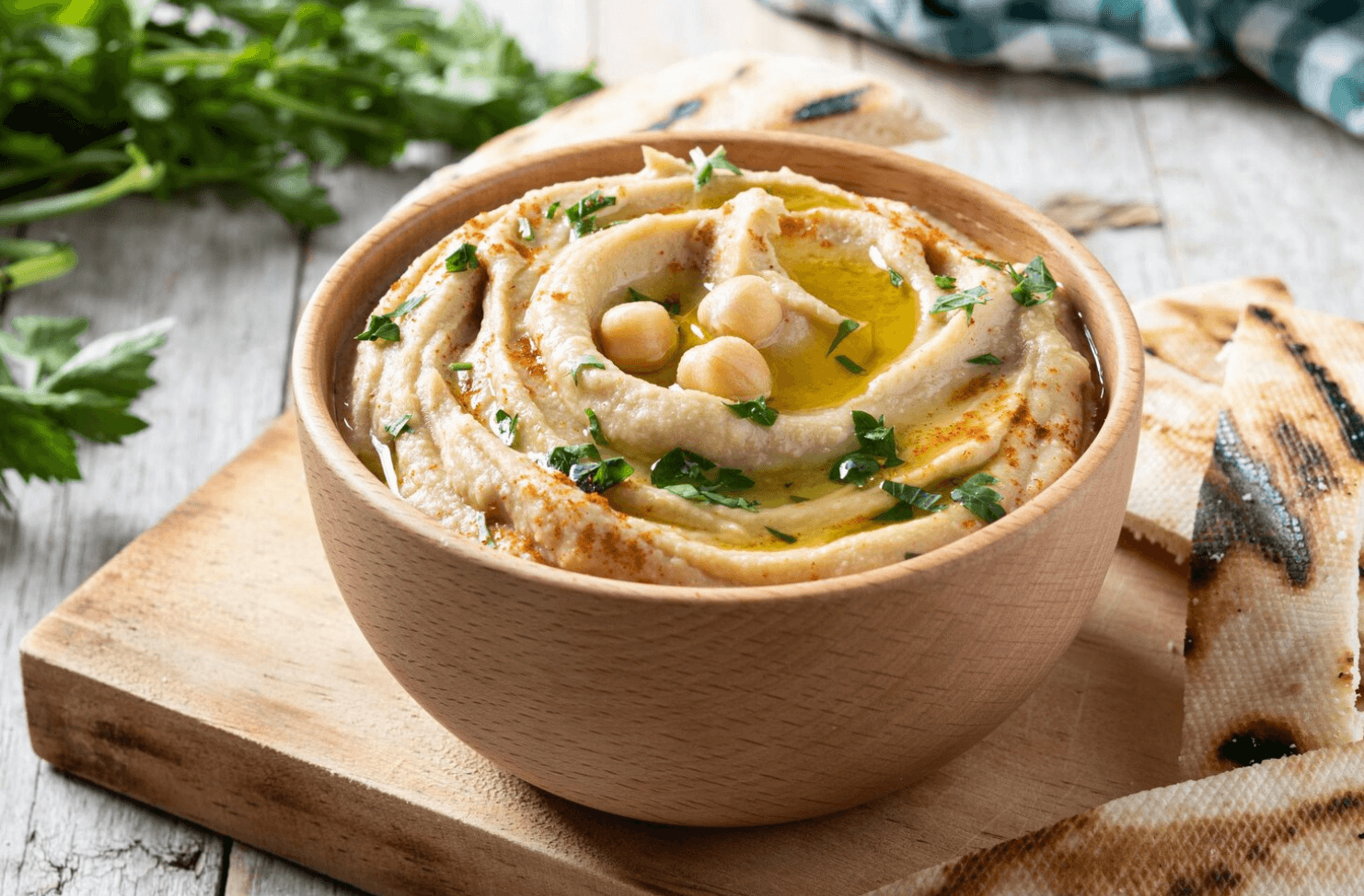

Hummus
Hummus is a clean, creamy dip constructed from mashed chickpeas, tahini, lemon juice, and garlic. It’s a staple in Arab delicacies and may be served as an appetiser, with bread, or as a aspect dish with grilled meats. Hummus, with its easy but daring flavour, is a Center Japanese staple that makes each meal full.
Halloumi
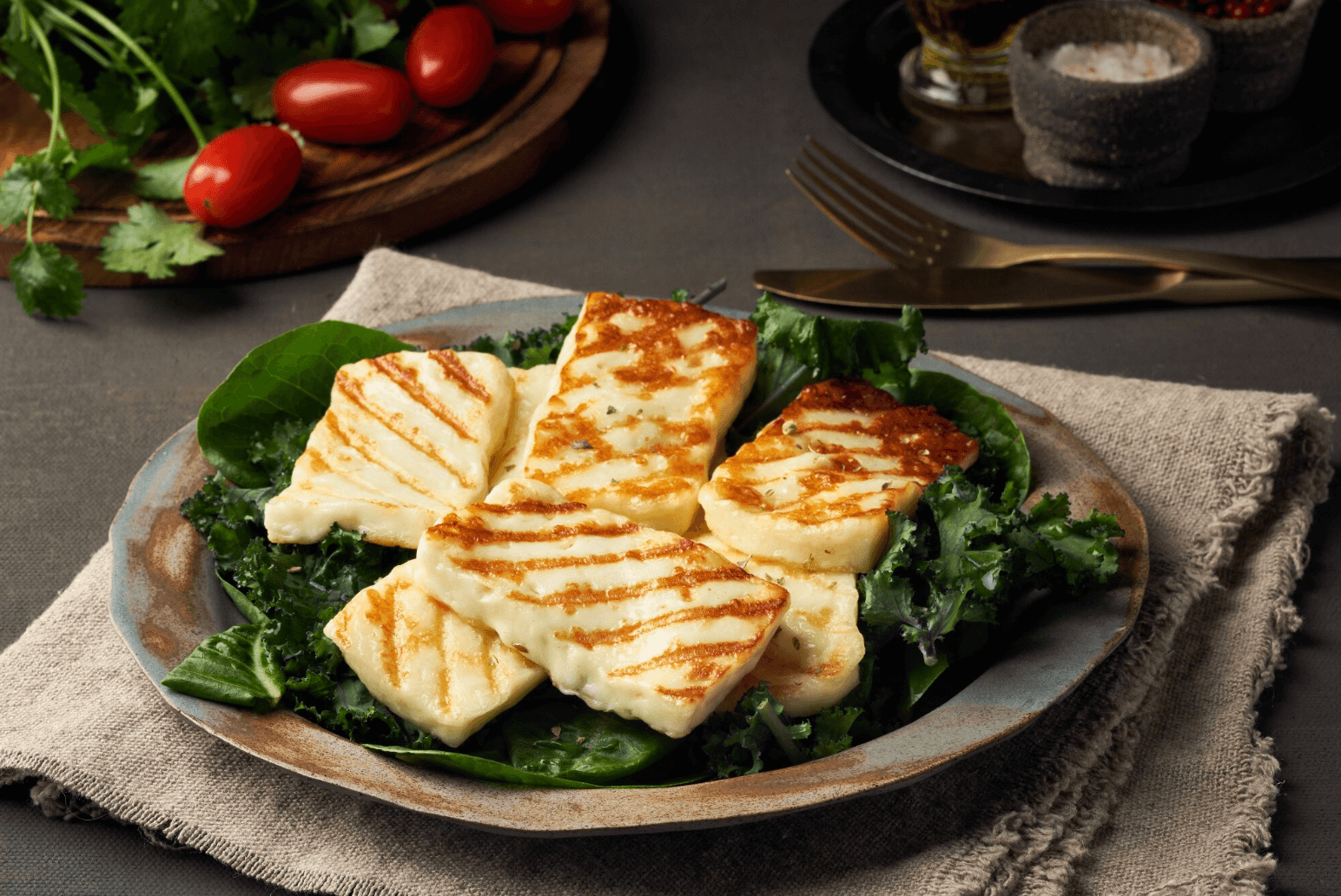

Halloumi
Halloumi is a kind of cheese initially from Cyprus, and it’s now a favorite in Arab delicacies. It has a agency texture and a salty style, making it excellent for grilling or frying. Typically paired with watermelon or served in salads, halloumi brings a singular salty-sweet flavour to Center Japanese dishes. It’s excellent for many who get pleasure from cheese with a daring, tangy flavour that provides depth to any meal.
Tabbouleh
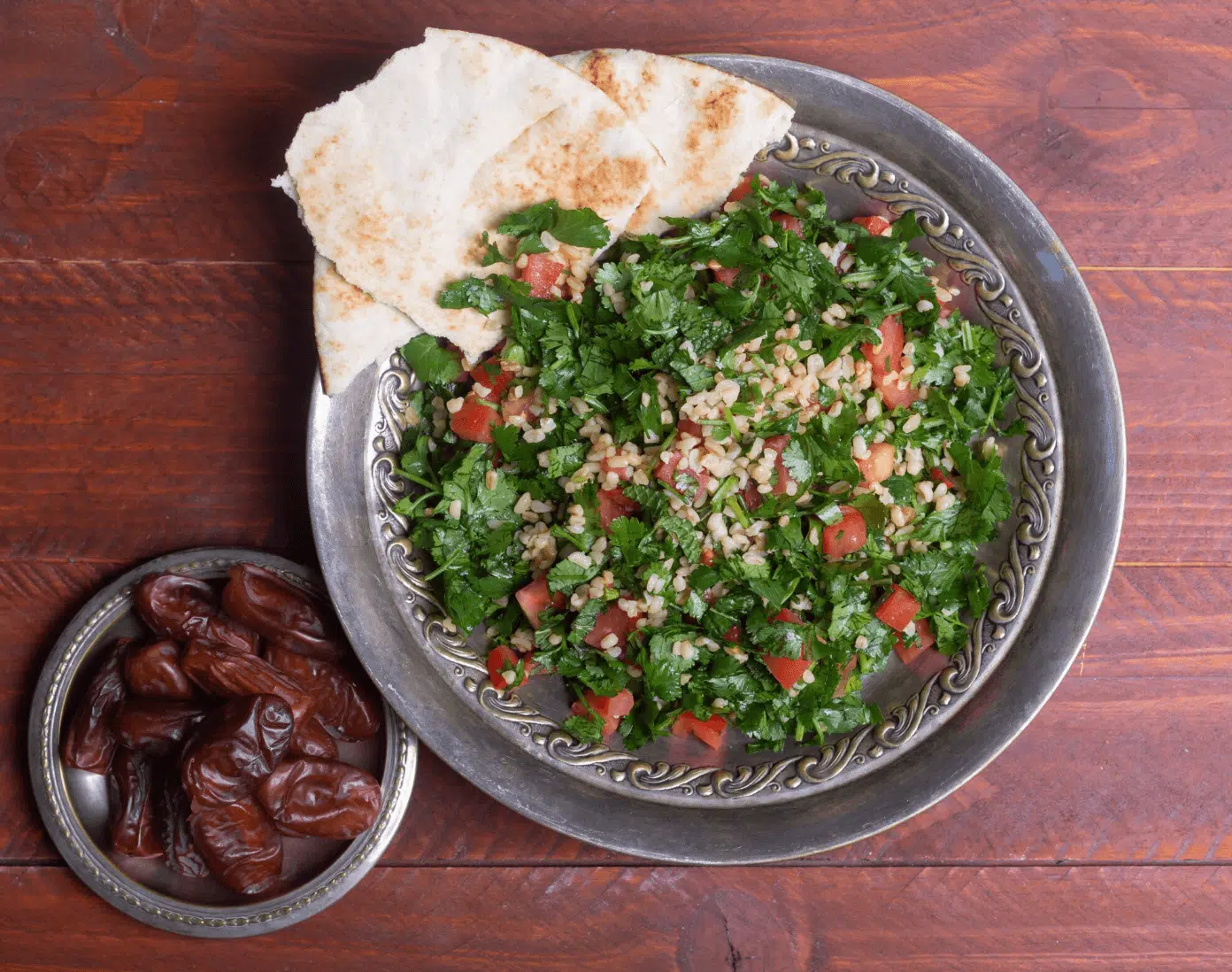

Tabbouleh
Tabbouleh is a contemporary and lightweight salad that’s very fashionable in Levantine delicacies. Constructed from finely chopped parsley, mint, tomatoes, onions, and bulgur wheat, it’s dressed with lemon juice and olive oil. Tabbouleh is usually served as a aspect dish, balancing out heavier major programs like grilled meats or kebabs. It’s refreshing, wholesome, and a real illustration of Center Japanese delicacies.
Fattoush
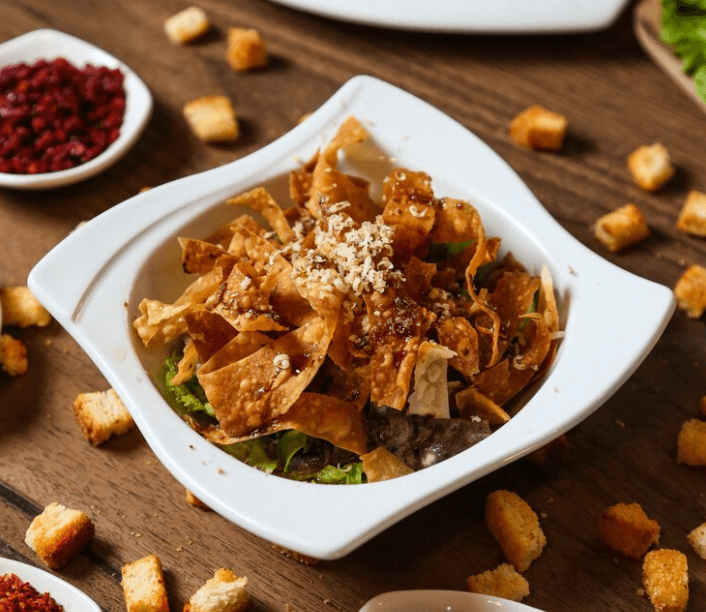

Fattoush
Fattoush is a hearty salad made with crispy items of toasted or fried pita bread blended with contemporary greens like tomatoes, cucumbers, and radishes. The bread soaks up the dressing, making it splendidly crunchy. This Levantine dish is usually served alongside grilled meat or kebabs. Fattoush exhibits how easy components in Arabic delicacies can come collectively to create one thing actually scrumptious.
Mansaf
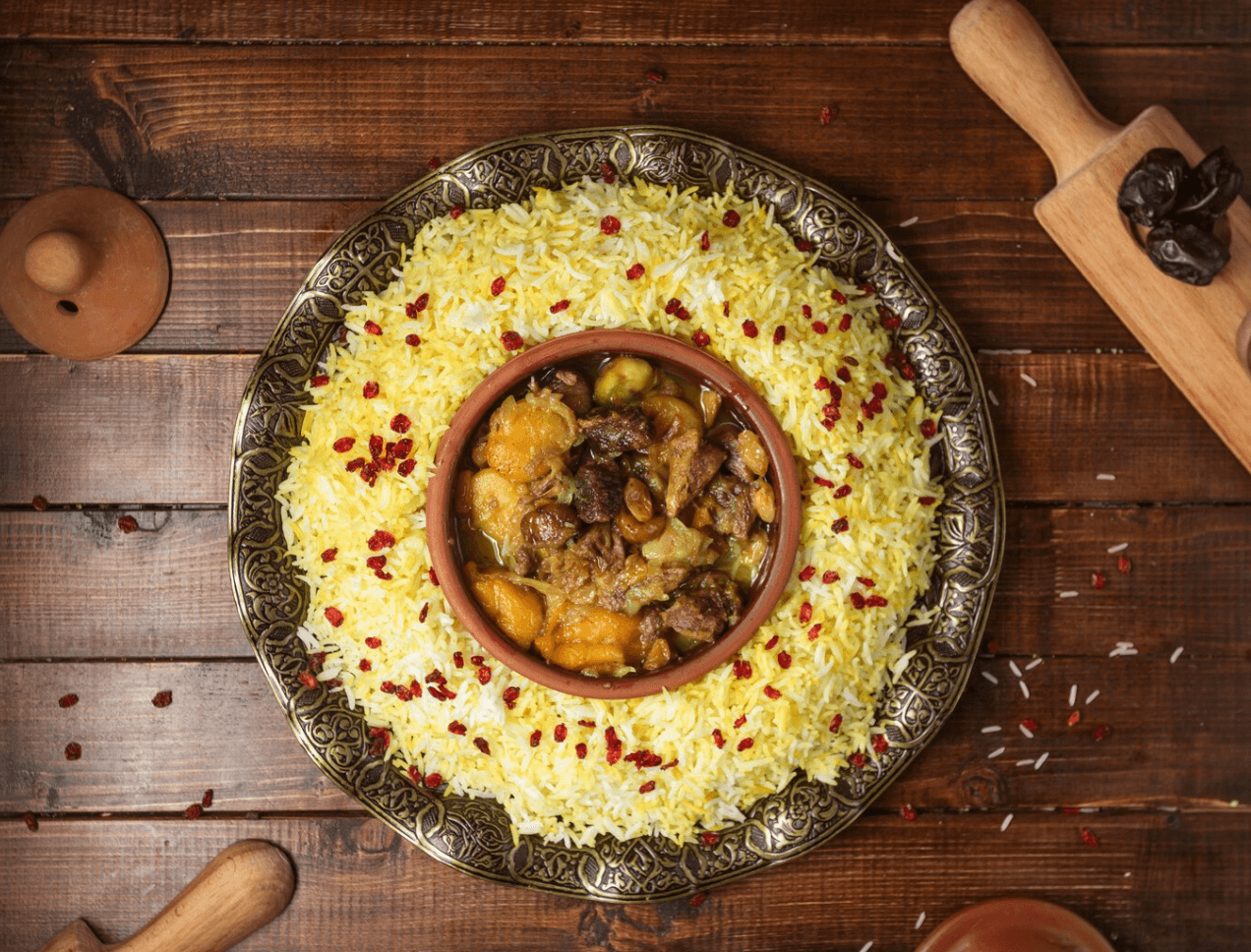

Mansaf
Mansaf is Jordan’s nationwide dish and an emblem of Arab hospitality. It consists of tender lamb or hen served on a mattress of saffron rice, topped with jameed, a tangy yoghurt sauce. Mansaf is historically eaten with arms and shared with household or visitors. This dish is a celebration of Arabic delicacies, full of wealthy flavours and meant to deliver individuals collectively.
Shawarma
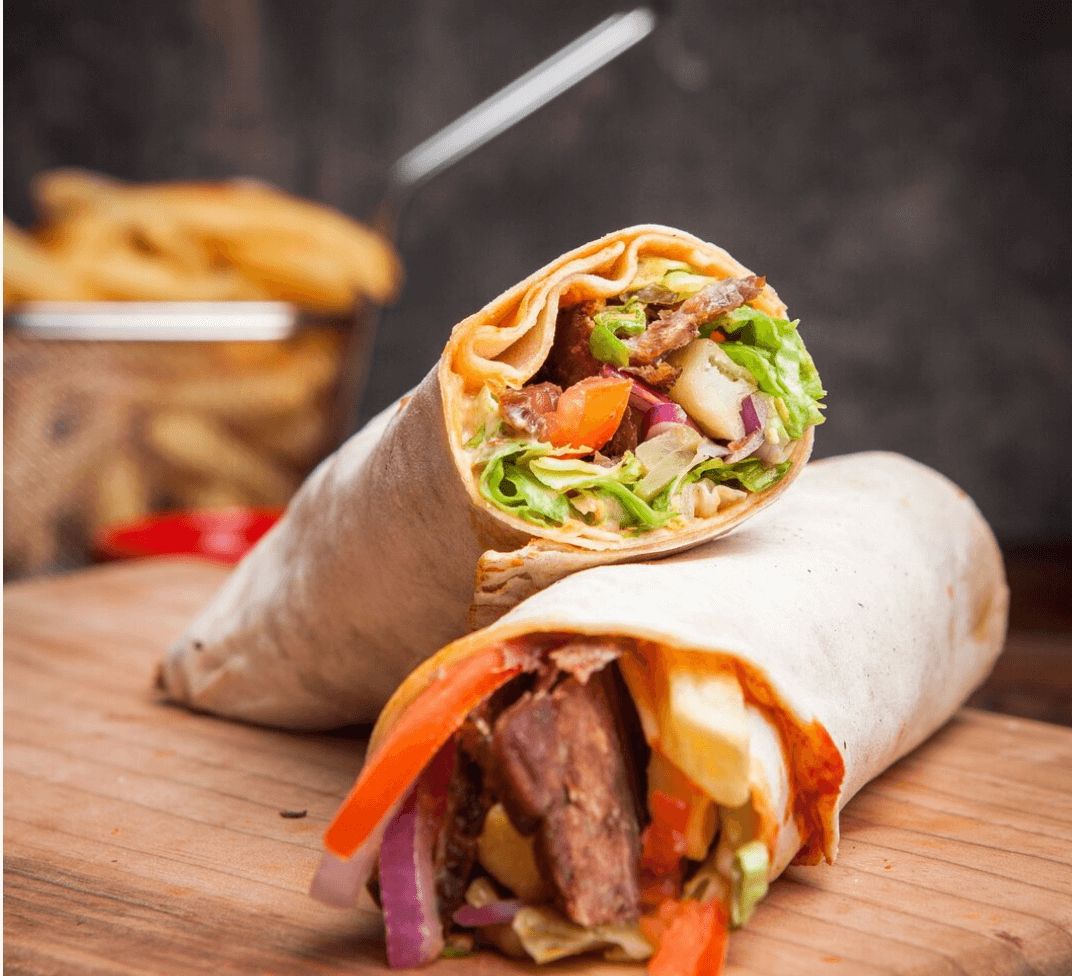

Shawarma
Shawarma is without doubt one of the hottest avenue meals within the Arab world. It options slices of marinated meat (typically hen or lamb) cooked on a rotating spit and served in pita bread with contemporary veggies and tahini sauce. Shawarma is liked for its daring spices and tender meat. It’s an iconic Arabic delicacies dish and a must-try for anybody who enjoys avenue meals with a burst of flavour.
Candy Delights: Desserts and Drinks in Arab Delicacies
Arabian delicacies is known for its wealthy desserts and refreshing drinks, excellent for ending a meal or celebrating particular events. From nut-filled pastries to aromatic teas, these treats provide a pleasant mixture of flavours and textures. Let’s dive into among the hottest sweets and drinks in Arabian delicacies.
Baklava
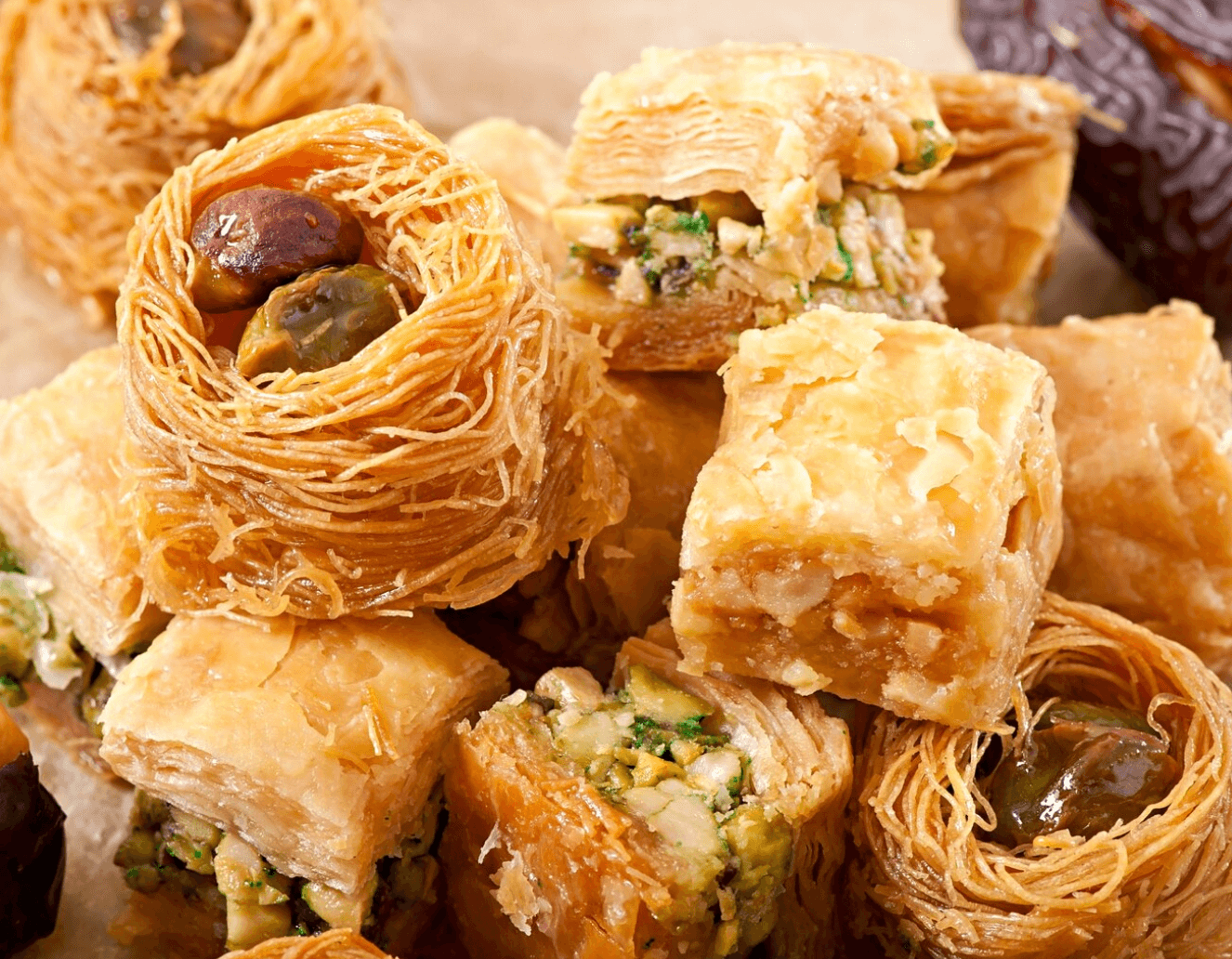

Baklava
Baklava is a scrumptious, candy pastry made with layers of skinny filo dough, full of a mix of chopped nuts like pistachios or walnuts, and soaked in honey or syrup. It’s a typical addition to festive tables in lots of Arabian international locations and is usually served throughout celebrations. The crisp layers of filo and the candy syrup make it an irresistible deal with, excellent with a cup of Arabic espresso or tea. Whether or not served as a dessert or a snack, Baklava is a real enjoyment of Arabian delicacies.
Kunafa
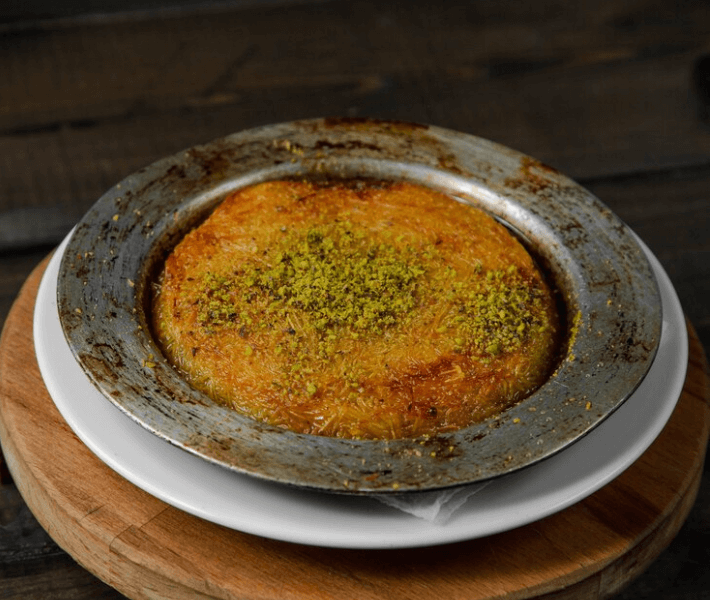

Kunafa
Kunafa is usually thought of the “queen” of Arabian sweets. Constructed from shredded filo dough or semolina dough, it’s full of candy cheese or custard and soaked in a sugary syrup. Kunafa has a crispy exterior and a comfortable, gooey inside, making it a favorite in lots of Arab international locations. Typically loved heat, this dessert is a must-try in case you’re exploring the candy aspect of Arabian delicacies. The addition of rose water or orange blossom water provides a definite perfume that makes Kunafa much more irresistible.
Qatayef
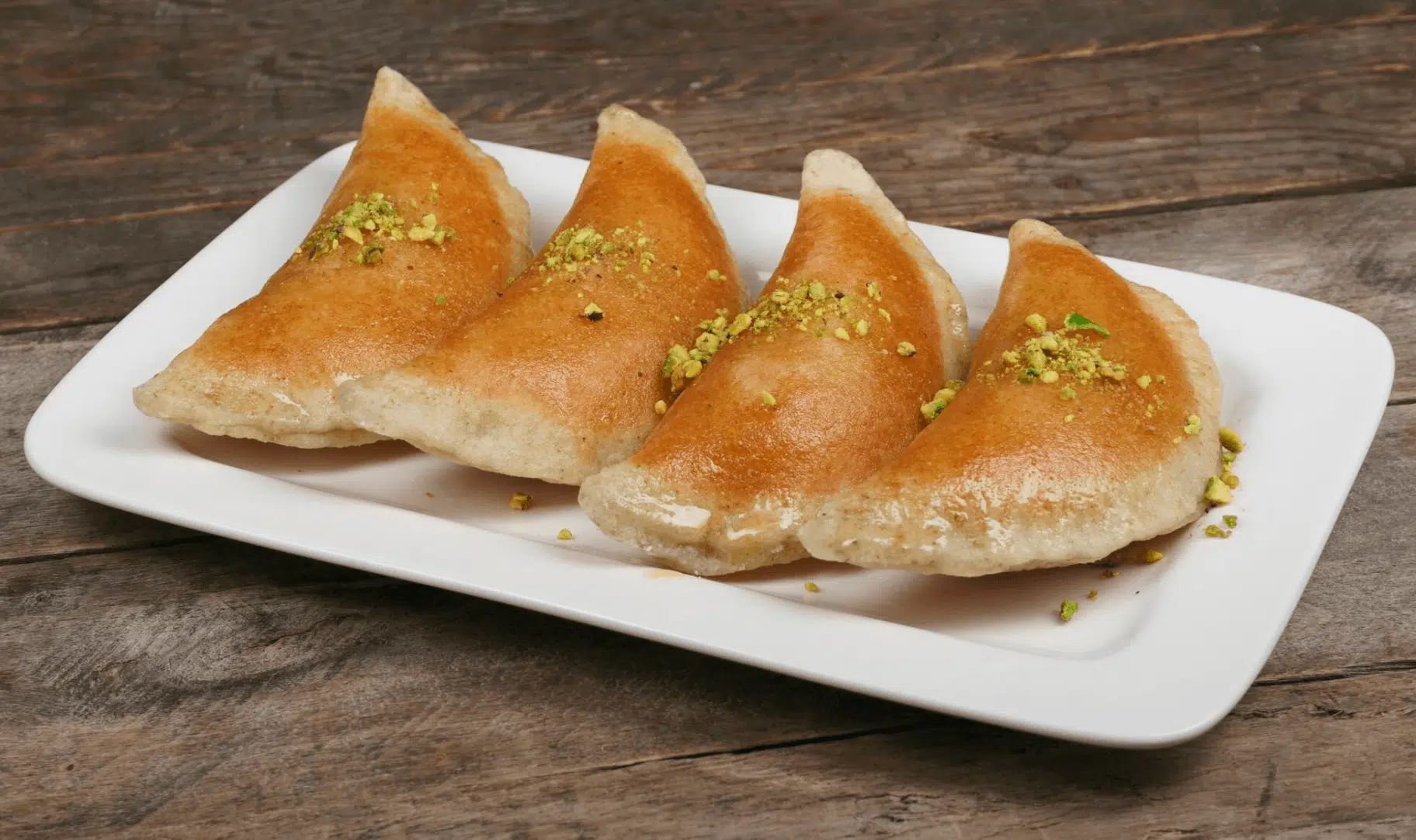

Qatayef
Qatayef is a candy, bite-sized deal with that’s particularly standard throughout Ramadan. These are small, stuffed pancakes full of candy cheese or chopped nuts, folded into half-moon shapes, after which fried till golden. They’re soaked in sugar syrup, making every chew an ideal steadiness of crunch and sweetness. Qatayef are a typical addition to Iftar tables and are sometimes shared amongst household and buddies. Their wealthy flavour and pleasant texture make them a favorite in Arabic delicacies.
Let’s now transition from the tantalising dishes and delve into some distinctive components and strategies that make Arab delicacies so extraordinary.
What Makes the Elements and Methods of Arab Delicacies So Distinctive?
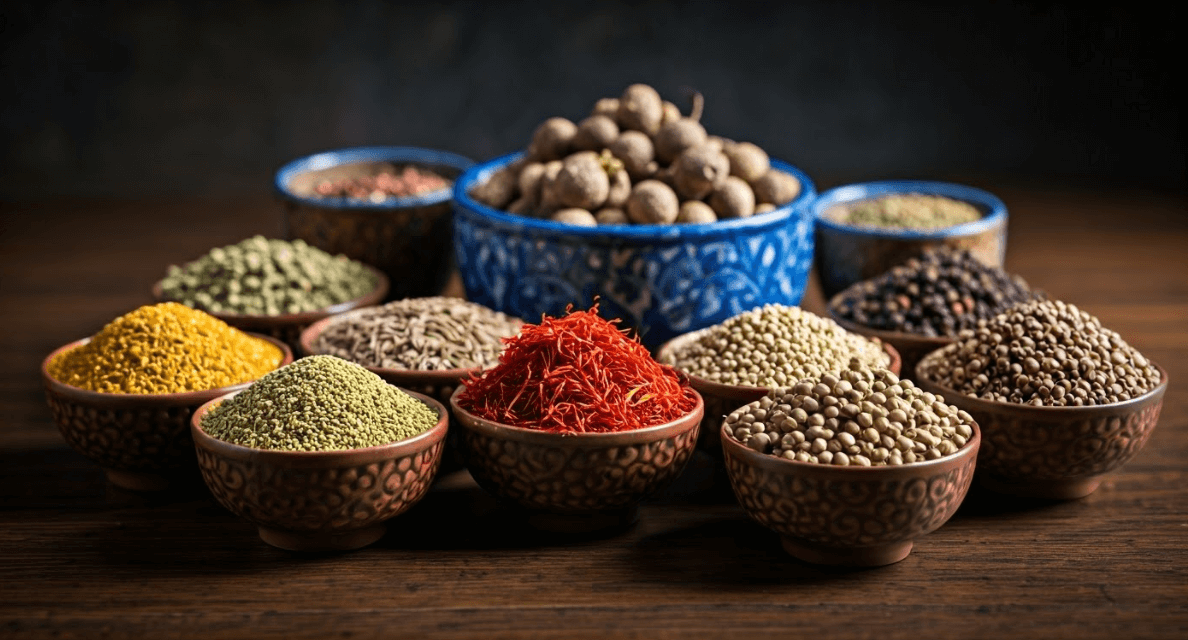

Number of spices utilized in Arab delicacies
Arab delicacies makes use of distinctive components like aromatic spices, contemporary herbs, and unique fruits that give every dish its distinct style. Conventional cooking strategies like gradual cooking, grilling, and marinating assist deliver out the most effective in these components. Olive oil, saffron, cumin, and cinnamon are among the key parts that add depth and aroma to Arab dishes. Every chew tells the story of a protracted culinary custom handed down by generations. Let’s take a better take a look at the particular components and strategies that make Arabic delicacies so distinctive.
The Use of Spices
One of many major options of Arab delicacies is its use of spices. These spices add depth and flavour to each dish, and every spice tells a narrative of the area’s wealthy culinary heritage. Some widespread spices utilized in Arab dishes embody:
- Cumin: This earthy spice is usually utilized in meat dishes, stews, and rice dishes.
- Cinnamon: A heat spice that can be utilized in each candy and savoury dishes.
- Sumac: A tangy, purple spice typically sprinkled on salads or meats for an additional zing.
- Purple Pepper: Provides warmth and color to dishes, making them extra vibrant and flavourful.
Spices are fastidiously chosen and blended to create the right steadiness of flavours, making Arab delicacies so distinct and fragrant.
Conventional Cooking Strategies
The best way meals is cooked in Arab delicacies performs a giant half in bringing out the most effective flavours. A few of the conventional cooking strategies utilized in Arab kitchens embody:
- Sluggish Cooking: Many Arab dishes, like stews and meats, are slow-cooked to permit the flavours to develop totally. One instance is cooking in a conventional “tagine” (a clay pot), which makes the meals tender and stuffed with flavour.
- Grilling: Grilling is a well-liked methodology for cooking meats like hen, lamb, and kebabs. The open flame provides the meals a smoky flavour that’s liked in Arab delicacies.
- Roasting: Greens and meats are sometimes roasted over an open fireplace or within the oven, which provides them a scrumptious smoky style.
- Steaming: Steaming helps to protect the pure flavours of greens, fish, and grains. It’s a wholesome option to cook dinner whereas conserving the meals mild and contemporary.
These conventional cooking strategies make Arab meals so wealthy in flavour and texture, with every methodology including its personal particular contact to the dish.
Frequent Elements in Arab Delicacies
Arab delicacies is filled with easy, contemporary components which can be utilized in practically each dish. A few of the most typical components in Arabic meals embody:
- Olive Oil: Olive oil is utilized in virtually each Arab dish. It provides a wealthy, clean flavour and can be a wholesome fats used for cooking and dressing salads.
- Pita Bread: This comfortable, spherical bread is a staple in Arab delicacies. It’s typically served with dips like hummus or used to wrap grilled meats and greens.
- Lemon Juice: Contemporary lemon juice is a key ingredient that provides a refreshing tang to many dishes. It’s generally utilized in salads, meat dishes, and even desserts.
- Contemporary Herbs: Herbs like parsley, mint, and coriander are used so as to add freshness to dishes. They’re typically sprinkled on prime of dishes simply earlier than serving for added flavour.
- Pine Nuts: These small, crunchy nuts are generally used to garnish dishes like pilafs, rice, and salads. They add texture and a nutty flavour to the meals.
The Artwork of Marinating
Marinating is a vital approach in Arab cooking. Meats like hen and lamb are sometimes marinated in a mixture of spices, herbs, and typically yoghurt. The marinade helps tenderise the meat and infuse it with wealthy flavours. After marinating, the meat is usually grilled or roasted, leading to a dish that’s juicy, tender, and stuffed with flavour. This is the reason marinated dishes, like kebabs, are so standard in Arab delicacies.
Last Ideas
Arab delicacies is not only about meals; it’s an attractive mixture of historical past, tradition, and custom that has developed over time, influenced by completely different areas. Each dish, ingredient, and cooking model has a narrative to inform, formed by commerce, migration, and cultural alternate. Whether or not you’re having fun with a tasty Shawarma from a busy avenue meals stall or relishing a wealthy plate of Mansaf in a high quality restaurant, each chew takes you on a journey into the center of Arabian tradition. Arab meals is a real reflection of its individuals, their tales, and their traditions, providing a singular style of their heritage.
Regularly Requested Questions
How can I strive Arab delicacies at house?
You’ll be able to strive Arab delicacies at house by following genuine recipes obtainable on-line, incorporating conventional Arab components and spices like Sumac, Za’atar, Baharat, and utilizing conventional cooking strategies like tagine cooking.
What are some staple components utilized in Arab delicacies?
Some widespread components in Arab delicacies are chickpeas, lamb, hen, fish, rice, wheat, contemporary herbs, yoghurt, olive oil, and an assortment of spices comparable to cumin, coriander, cinnamon, and turmeric.
Are there any cultural or conventional customs related to Arab eating?
Arab eating customs are an integral a part of their tradition emphasising hospitality, generosity, and taking time to get pleasure from meals collectively. Additionally, sure practices like consuming with the fitting hand, saying “Bismillah” (within the identify of God) earlier than consuming, and never losing meals are widespread in Arab households.



